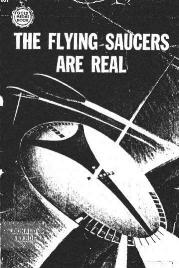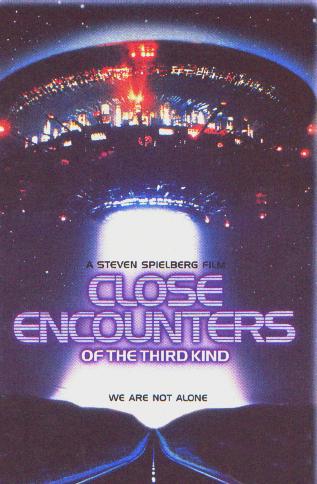|
The Alien: Friend or Foe? by Steve Johnson Over the last few years, there has been a definite shift of opinion concerning the possible reasons the Greys might have for visiting our small planet. Previously, the prevailing thought within the UFO community was that they were a benevolent race merely using their advanced technology to study us and our world. However, as more people have come forward to relate terrifying tales of alien abduction and subsequent invasive medical procedures, the emphasis has been brought to the fore that these small, innocent-looking beings have a more macabre goal. The two camps cite much evidence to illuminate their particular beliefs:
The opposing group of researchers believe that the Greys are here for more sinister reasons. They bring forward the horrific tales of alien abduction as proof of their claims. The Greys, it is said, do not consider us to be intelligent life-forms, that we should be treated as lab rats or cattle. They take people from their homes/cars whenever the whim suits them and force their victims to endure terrifying procedures where genetic material is removed for some unknown, or poorly understood, purpose. The traumatized abductee is then dropped back into his/her home/car and left to cope with the consequences of their horrific ordeal. But, then again, imagine how a wild animal feels when we shoot it with a tranquillizer dart, tag it and send it back to the bush. Do we ever wonder what might be going through the beast's mind? No, so why should the Greys feel anything after they have tagged a human being and released it back into its natural habitat? The proponents of the aggressive Grey theory suggest that the US government was once actually collaborating with the aliens, turning a blind eye to the abduction and cattle mutilation phenomena and even allowing them to set up underground bases in exchange for advanced materials and technology. It has been said that this partnership came to an end in the early 1970s after a fierce gun battle at one of the Grey bases in the Nevada desert concluded with the deaths of numerous US military personnel. Whether or not the ETs still operate facilities within the United States, since the breakdown of trust between our two races, is uncertain. The one point that the two groups of researchers do agree upon is that the governments of the world (and most prominently the US government) have far more knowledge of the UFO subject and aliens in particular than they are prepared to publicly admit. This aside, the matter I wish to discuss is concerned with the shifting of opinion that now generally regards the Greys as a manipulative and possibly aggressive race of invaders.
Probably the best gauge of the perception of aliens is reflected in the entertainments industry - television and cinema. During the fifties, the accepted way to depict aliens was as hideous, inhuman invaders. The Oscar-winning War Of The Worlds and Earth Vs. The Flying Saucers (which was based on Donald Keyhoe's article Flying Saucers Are Real) are possibly the best two examples of this ideology. Then in the late sixties to the early eighties, it became fashionable to portray aliens as friendly, sage beings with much to teach our child-like race (2001: A Space Odyssey, Close Encounters of the Third Kind and ET - The Extra-Terrestrial are prime examples.). Then suddenly, the message from the film studios changed dramatically. Gone were the nice aliens and back were the evil, human-hating creatures of the fifties B-movie fame. The TV series V was the first major example of this change of tack. We had just got used to ET saying that all he wanted to do was "Go home", when the dastardly, reptilian Visitors blasted onto our television screens with their mission to subvert and eventually conquer the Earth. Some researchers have said that this series was purposefully produced to subliminally alert the public to the potential threat from space. Intriguingly, the Visitor's motherships in V and the massive destroyers from the 1996 hit Independence Day are remarkably similar in both their appearance and method of arrival. Both were huge, saucer-shaped craft that arrived suddenly and unexpectedly, placing themselves strategically over the major cities of the world before revealing the true purpose of their mission.
In a similar vein, Dark Skies explored the UFO topic but from a historical perspective. The series suggested that certain events in the 1960s (JFK's assassination, the Vietnam War, the Great New York Blackout of 1965 etc.) were directly caused by the presence of the Greys. In this scenario, however, the Greys are merely unwilling hosts to malevolent, parasitic life-forms called Ganglions. Despite the high production quality of this series and its apparent popularity amongst fans of the genre, the show was abruptly cancelled at the end of its first season, leaving many of the questions it posed unanswered. Why did the alien presence on Earth go from bad in the 50s and early 60s to good on the late 60s through the 70s and early 80s and back to bad again in the late 80s and 90s? Historians will tell you that the Cold War paranoia of the post war years influenced the more aggressive alien movies, while the make love not war ethics of the late 60s and early 70s gave rise to more mellow alien encounters. Now, as we approach the new millennium, the old fears of the unknown are resurfacing. Not the unknown enemy, as symbolized by the Soviets in the years following World War II, but the unknown future as man plunges headlong into the 21st century.
Personally, I do not believe that the US government has much control over the material released by the major film studios. Why would they be telling us that the aliens are friendly, as in Close Encounters, when just a few years earlier they had been engaged in combat somewhere in the Nevada desert? Then again, why would a high quality TV series like Dark Skies be cancelled after a single season, while shows with lesser production values (in my opinion) such as Sliders, Hercules and the Highlander shows continue on year after year? Were the producers of Dark Skies onto something? Was the subject matter too prickly for the US government to handle? Who knows. If we are being spoon-fed the notion that the Greys are out to destroy us, then I would rather it be out in the open and not disguised behind gung-ho disaster flicks. It may be a terrifying scenario to face, but at least we'd really be prepared and not just think its a cinematic hoot. © 1998 Steve Johnson |
 The side believing that the Greys (and other extra-terrestrial races)
are benevolent contend that nobody has been harmed by the aliens', even
during the medical examinations that are said to take place aboard their
spacecraft. Their vessels have apparently attempted to avoid all contact
with our fighter interceptors, zipping away at unbelievable speeds when
challenged by our air forces. The downing of planes, such as the one flown
by Captain Mantell (left), are put down to tragic accidents caused by
the pilots themselves and not by any belligerent act on the part of the ETs. As far as we know, nobody has been deliberately killed by the aliens
among us.
The side believing that the Greys (and other extra-terrestrial races)
are benevolent contend that nobody has been harmed by the aliens', even
during the medical examinations that are said to take place aboard their
spacecraft. Their vessels have apparently attempted to avoid all contact
with our fighter interceptors, zipping away at unbelievable speeds when
challenged by our air forces. The downing of planes, such as the one flown
by Captain Mantell (left), are put down to tragic accidents caused by
the pilots themselves and not by any belligerent act on the part of the ETs. As far as we know, nobody has been deliberately killed by the aliens
among us.

 The X-Files is another show that centres around the theory that
aliens are among us for less than friendly reasons. Conversely, though,
the more dangerous threat is illustrated by the secret government agencies
attempting to keep the whole alien issue under wraps.
The X-Files is another show that centres around the theory that
aliens are among us for less than friendly reasons. Conversely, though,
the more dangerous threat is illustrated by the secret government agencies
attempting to keep the whole alien issue under wraps.

 These would be the traditionalists views on the genre, but many are
of the opinion that very often movies and television express the tenets
and policies of governments, albeit in an entertaining format. It is rumoured
that Steven Spielberg was told to make Close Encounters by
government officials desiring to prepare us for the day when aliens arrived.
More recently, it was said that he was also instructed to go into production
on Deep Impact, the end-of-the-world disaster epic directed by Mimi
Leder. Although these two films handle different themes, they do have one
thing in common - something from outer space is heading our way!
These would be the traditionalists views on the genre, but many are
of the opinion that very often movies and television express the tenets
and policies of governments, albeit in an entertaining format. It is rumoured
that Steven Spielberg was told to make Close Encounters by
government officials desiring to prepare us for the day when aliens arrived.
More recently, it was said that he was also instructed to go into production
on Deep Impact, the end-of-the-world disaster epic directed by Mimi
Leder. Although these two films handle different themes, they do have one
thing in common - something from outer space is heading our way!